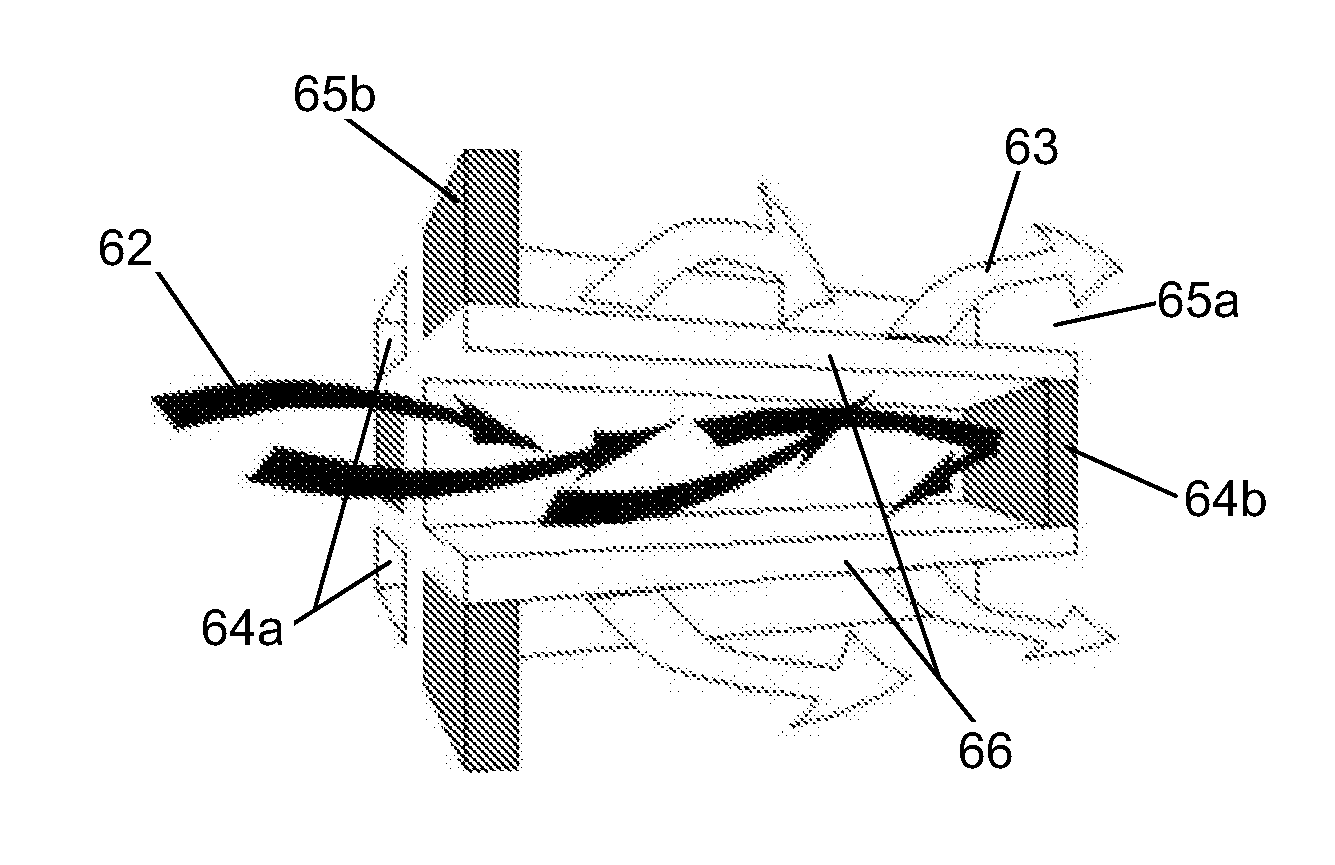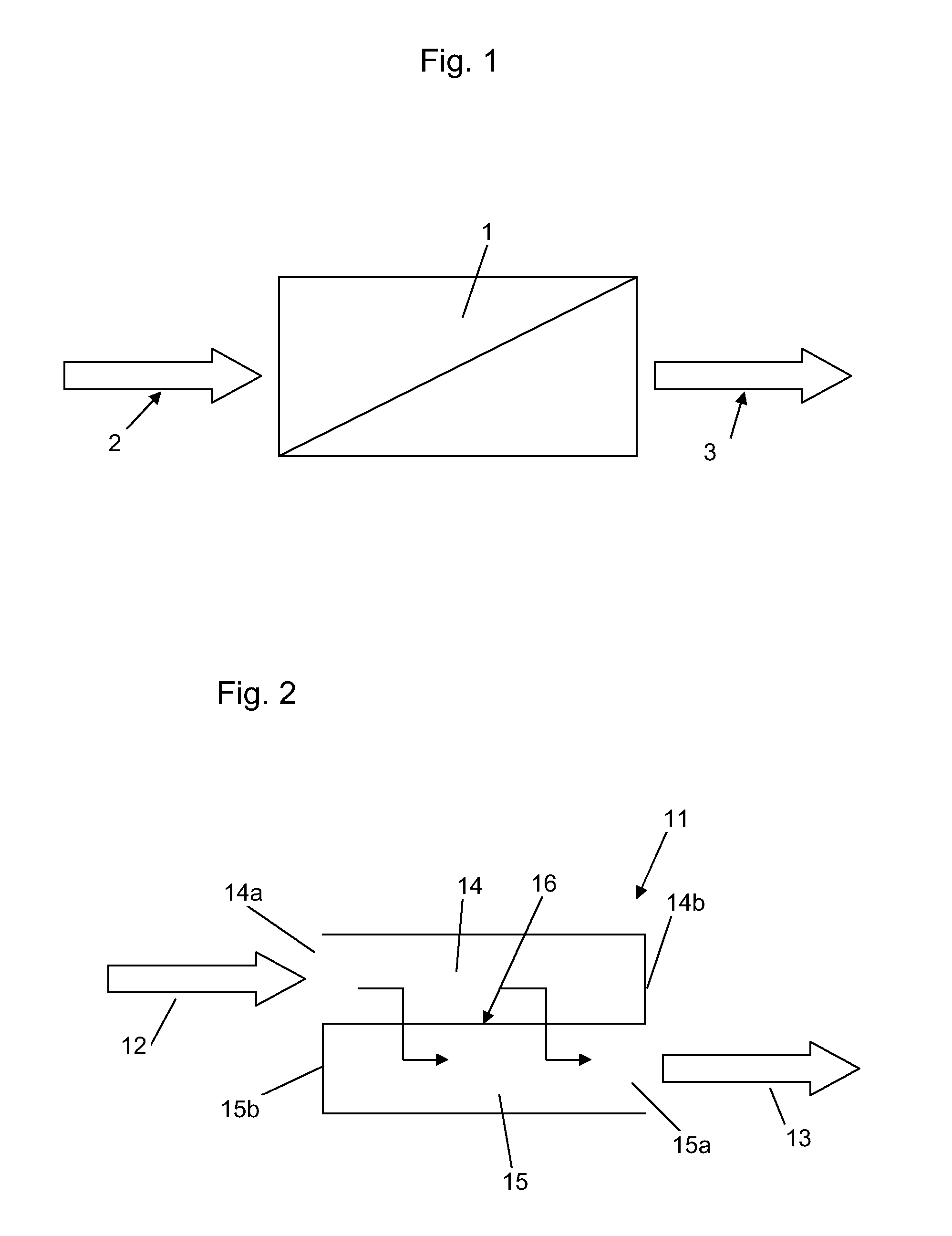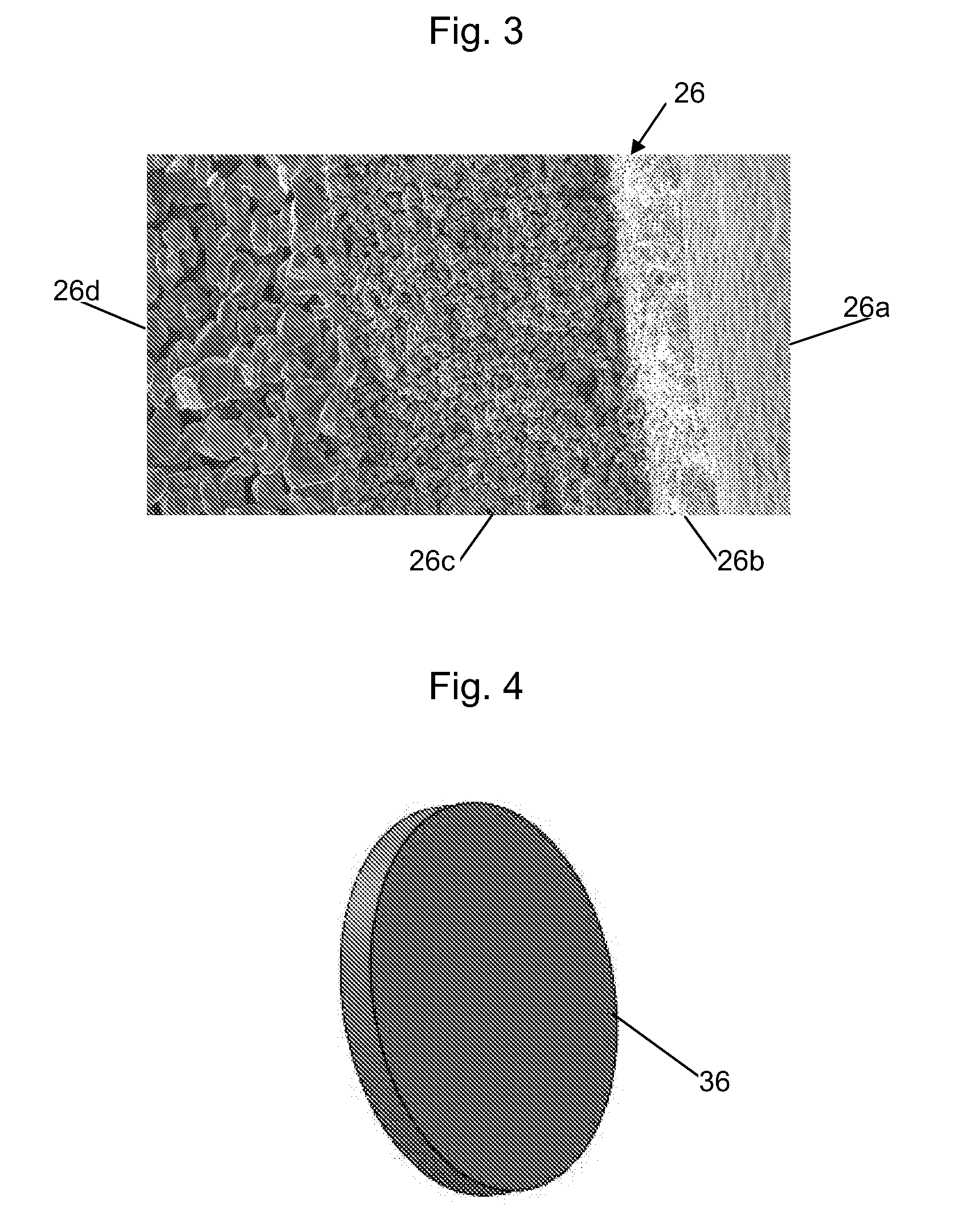Ceramic dead-end filter, a filter system, a method of filtering and a method of producing a ceramic dead-end filter
a dead-end filter and ceramic technology, applied in the field of ceramic filters, can solve the problems of high cost, high degree of recirculation, and large space requirements of sand filters, and achieve the effect of improving backwash efficiency
- Summary
- Abstract
- Description
- Claims
- Application Information
AI Technical Summary
Benefits of technology
Problems solved by technology
Method used
Image
Examples
example 1
[0262]A support layer is produced by extruding a paste of different classes of grain sizes of the ceramic material, structurally bonded with organic binders. The paste is extruded through a specific tool, which gives the geometry of the support layer. The green support layer is fired where the structure of the ceramic grains is fixated. The selective front layer is produced by a slip casting technique, where the different classes of grain sizes of the ceramic material are mixed with organic binders into a slip casting media. The slip casting media is a colloidal suspension of the ceramic grains in a dispersion media. The composition of the slip casting media, in particular the ceramic grains and ceramic precursors, the structure of the support layer and the conditions during slip casting, determines the characteristics of the final membrane. The membrane is fired at high temperatures and the structure of the ceramic grains is fixated. During the firing the organic binders are burned...
example 2
[0265]For certain applications it is possible to produce a ceramic membrane without support layer. The selective front layer is produced similar to the support layer above, however with classes of ceramic grains generally smaller than if the layer should act as a support layer for a specific selective layer. This production technique is typically limited to selective front layers with relatively large maximum pore size diameters such as selective front layers with maximum pore size of from about 1 μm to about 25 μm, as compared to a combination of support and selective layer.
example 3
[0266]A support layer is produced as described in example 1. The support layer is shaped by extrusion as a honeycomb structure with a plurality of open ended channels.
[0267]The channels of the honeycomb structure can be closed (plugged) with a paste of ceramic powder structured with organic binders. The paste can be distributed to every second channel via a fixed rubber template that allows the paste to be delivered only to the designated channels. The paste is forced into the channel for example with a piston, thus making individual closings (plugs). The paste is fired at conditions corresponding to the involved grain sizes of the ceramic material for example as described in US patent 2006 / 0236668.
PUM
| Property | Measurement | Unit |
|---|---|---|
| pore size diameter | aaaaa | aaaaa |
| thickness | aaaaa | aaaaa |
| thickness | aaaaa | aaaaa |
Abstract
Description
Claims
Application Information
 Login to View More
Login to View More - R&D
- Intellectual Property
- Life Sciences
- Materials
- Tech Scout
- Unparalleled Data Quality
- Higher Quality Content
- 60% Fewer Hallucinations
Browse by: Latest US Patents, China's latest patents, Technical Efficacy Thesaurus, Application Domain, Technology Topic, Popular Technical Reports.
© 2025 PatSnap. All rights reserved.Legal|Privacy policy|Modern Slavery Act Transparency Statement|Sitemap|About US| Contact US: help@patsnap.com



